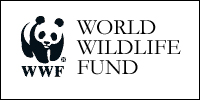New photo evidence of snow leopards in northeast India
Published by the World Wildlife Fund For perhaps the first time ever, a snow leopard was captured by a camera trap in a remote forest in the Indian state of Arunachal Pradesh. Although known for its biodiversity, Arunachal Pradesh, located in the farthest northeast point in the country, remains largely unexplored, making this photographic evidence of […]




















